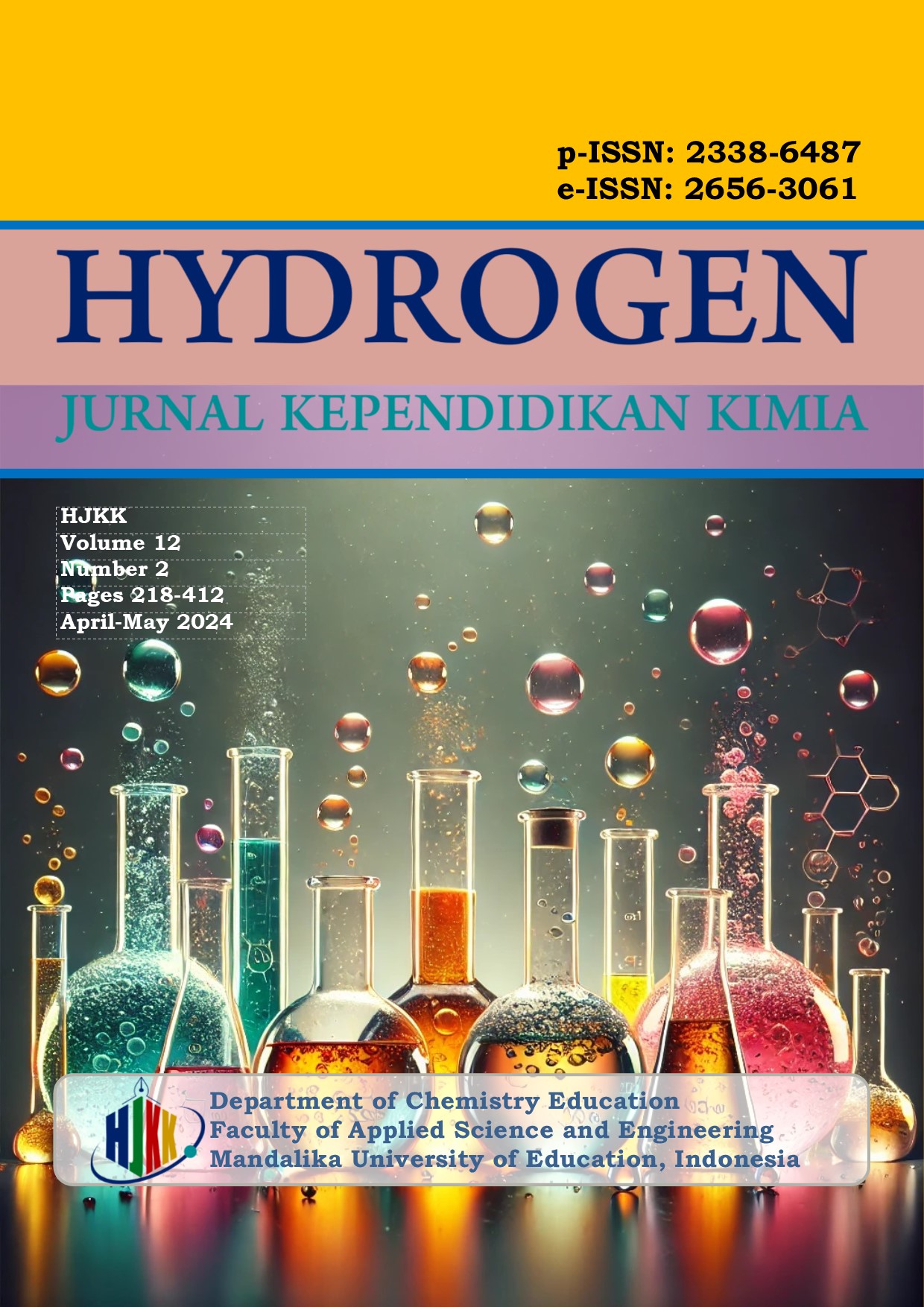Analysis of Ranitidine Hydrochloride Content in Drug X Samples Using A UV-Visible Spectrophotometry
DOI:
https://doi.org/10.33394/hjkk.v12i2.11059Keywords:
dissolution, ranitidine hydrochloride, UV-Vis spectrophotometryAbstract
References
Abbas, M. A., & Rasheed, A. S. (2018). Retention Characteristic Of Ranitidine Hydrochloride On New Polymer-Based In Zwitter Ion Chromatography-Hydrophilic Interaction Chromatography Stationary Phases. Journal of the Chemical Society of Pakistan, 40(1).
Cascone, S. (2017). Modeling and Comparison Of Release Profiles: Effect Of The Dissolution Method. European Journal of Pharmaceutical Sciences, 106, 352–361.
Chandra, B., Rivai, H., & Marianis. (2018). Pengembangan Dan Validasi Metode Analisis Ranitidin Hidroklorida Tablet Dengan Metode Absorbansi Dan Luas Daerah Di Bawah Kurva Secara Spektrofotometri Ultraviolet. Jurnal Farmasi Higea, 8(2).
Gray, V. A., & Rosanske, T. W. (2020). Dissolution.
Ismail, F., & Kanitha, D. (2020). Identifikasi Dan Penetapan Kadar Pentoxyfillin Dalam Sediaan Tablet Secara Spektrofotometri Fourier Transform Infrared (FT-IR) Dan Spektrofotometri Uv-Visibel. Jurnal Farmagazine, 7(2).
Kusuma, D., & Apriliani, E. D. (2018). Evaluasi Fisik Tablet Parasetamol Generik dan Tablet Parasetamol Bermerk Dagang. Jurnal Kefarmasian Akfarindo, 3(1), 1–7.
Pradana, A. T., Parfati, N., & Shira, S. A. (2015). Formulasi Floating Tablet Menggunakan Variasi Konsentrasi HPMCK100M Terhadap Kemampuan Mengapung dan Profil Disolusi Tablet Ranitidine HCl. Jurnal Sains & Teknologi, 9(1).
Wahyuni, Y. S., Lely, N., & Oktariani, S. (2018). Formulasi Tablet Sistem Floating Ranitidin HCl Menggunakan Polimer Kombinasi HPMC dan Pektin. Jurnal Ilmiah Bakti Farmasi, 3(2), 35–44.
Downloads
Published
How to Cite
Issue
Section
Citation Check
License
License and Publishing Agreement
In submitting the manuscript to the journal, the authors certify that:
- They are authorized by their co-authors to enter into these arrangements.
- The work described has not been formally published before, except in the form of an abstract or as part of a published lecture, review, thesis, or overlay journal.
- That it is not under consideration for publication elsewhere,
- That its publication has been approved by all the author(s) and by the responsible authorities – tacitly or explicitly – of the institutes where the work has been carried out.
- They secure the right to reproduce any material that has already been published or copyrighted elsewhere.
- They agree to the following license and publishing agreement.
Copyright
Authors who publish with Hydrogen: Jurnal Kependidikan Kimia agree to the following terms:
- Authors retain copyright and grant the journal right of first publication with the work simultaneously licensed under a Creative Commons Attribution License (CC BY-SA 4.0) that allows others to share the work with an acknowledgment of the work's authorship and initial publication in this journal.Â
- Authors are able to enter into separate, additional contractual arrangements for the non-exclusive distribution of the journal's published version of the work (e.g., post it to an institutional repository or publish it in a book), with an acknowledgment of its initial publication in this journal.
- Authors are permitted and encouraged to post their work online (e.g., in institutional repositories or on their website) prior to and during the submission process, as it can lead to productive exchanges, as well as earlier and greater citation of published work.
Licensing for Data Publication
Hydrogen: Jurnal Kependidikan Kimia uses a variety of waivers and licenses, that are specifically designed for and appropriate for the treatment of data: Open Data Commons Attribution License, http://www.opendatacommons.org/licenses/by/1.0/ (default) Other data publishing licenses may be allowed as exceptions (subject to approval by the editor on a case-by-case basis) and should be justified with a written statement from the author, which will be published with the article.







